Guide to Quilting Patterns: Finding the Best Match for You
Quilting is not just a craft; it's an art form that allows you to express your creativity while creating something beautiful and functional. Whether you're a seasoned quilter or just starting out, the choice of quilting pattern can significantly influence your experience and the final product. In this guide, we will explore various quilting patterns, providing insights on how to choose the right one based on your personal style, skill level, and project requirements. With the right pattern, you can embark on a quilting journey that is both enjoyable and fulfilling. So, let’s dive in and discover how you can find the perfect match for your quilting adventure!
At its core, a quilting pattern serves as a blueprint for creating stunning quilts. Think of it as the recipe for a delicious dish; without it, you might end up with a chaotic mix of ingredients that don’t quite come together. There are various types of quilting patterns, ranging from simple designs that are perfect for beginners to intricate patterns that challenge even the most experienced quilters. The complexity of a pattern can greatly influence your project, affecting not only the time it takes to complete but also the level of enjoyment you experience along the way. Understanding the different types of patterns available is the first step in your quilting journey.
Selecting a quilting pattern that matches your skill level is crucial for a successful project. If you choose a pattern that is too advanced, you may feel overwhelmed and frustrated, whereas a pattern that is too simple might not provide the challenge you crave. Here’s a quick breakdown of patterns suitable for different skill levels:
- Beginners: Simple patterns that focus on basic techniques.
- Intermediate: Patterns that introduce more complex piecing and design elements.
- Advanced: Intricate patterns that require a high level of skill and creativity.
For novice quilters, starting with simple patterns can provide a great foundation to build confidence and skills. Beginner-friendly designs often emphasize basic techniques and allow you to practice without feeling overwhelmed. Here are a couple of excellent options for beginners:
Strip quilting is an accessible method for beginners. It involves sewing together strips of fabric to create larger blocks, making it both enjoyable and straightforward. This technique allows you to play with colors and patterns without getting bogged down in complex piecing. Imagine creating a beautiful quilt with just a few strips of fabric—it's like painting a masterpiece with broad strokes!
Patchwork is another beginner-friendly approach that is perfect for those just starting out. This technique involves sewing together various pieces of fabric to create a cohesive design. It’s a fantastic way to use up fabric scraps and experiment with different colors and patterns. In this section, we will cover basic patchwork techniques, including fabric selection and piecing methods, ensuring you can create charming quilts with minimal stress.
Once you’ve mastered the basics, you might find yourself eager to tackle more complex designs. Intermediate and advanced quilters can explore intricate patterns that challenge their skills while allowing for creativity in quilting projects. These patterns often incorporate advanced techniques such as curved piecing, appliqué, and foundation paper piecing. The thrill of piecing together a complex quilt can be compared to solving a puzzle; each piece must fit perfectly to create a stunning final product.
Seasonal and thematic patterns can add a unique touch to your quilting. Whether you want to celebrate the warmth of summer or the coziness of winter, there’s a pattern out there to reflect your mood. Popular motifs include flowers for spring, pumpkins for fall, and snowflakes for winter. These patterns not only enhance your home décor but also serve as wonderful gifts for friends and family.
Creating quilts for holidays can be a fun way to celebrate. Imagine snuggling under a quilt adorned with festive designs during the holidays—it adds a special touch to any celebration. We will explore various holiday-inspired patterns that can enhance your festive decorations and gift-giving, ensuring your quilts resonate with the spirit of the season.
For those who find solace in the great outdoors, nature-inspired quilts can bring the beauty of the outdoors into your home. Patterns that depict landscapes, flora, and fauna are perfect for nature lovers. These designs not only evoke a sense of tranquility but also allow you to express your love for nature through your quilting. Let your creativity flow as you capture the essence of the natural world in your quilts!
Choosing the right fabrics is essential for bringing your quilting pattern to life. The fabric selection can make or break your project, so it’s important to consider color schemes, textures, and types of fabric. In this section, we will provide guidance on how to select fabrics that complement your chosen pattern.
Different fabric types can affect the overall look and feel of your quilt. Common fabric types used in quilting include cotton, flannel, and batik. Each has its unique characteristics, and understanding these can help you make informed decisions. For instance, cotton is versatile and easy to work with, while flannel offers warmth and coziness—perfect for winter quilts!
Color plays a significant role in quilting aesthetics. A well-thought-out color scheme can elevate your quilt from ordinary to extraordinary. In this section, we will introduce basic color theory concepts to help you create harmonious and visually appealing quilting projects. Whether you opt for bold contrasts or soft pastels, understanding how colors interact can make a world of difference.
Q: What is the best fabric for quilting?
A: Cotton is generally considered the best fabric for quilting due to its durability and ease of use. However, flannel and batik fabrics also make excellent choices depending on your project.
Q: How do I know if a pattern is suitable for my skill level?
A: Look for patterns that clearly state the skill level required. If you're unsure, choose beginner patterns to build your confidence before moving on to more complex designs.
Q: Can I mix different fabric types in a quilt?
A: Yes, you can mix different fabric types, but be mindful of their characteristics. For example, combining cotton with flannel can create a beautiful texture, but ensure they are compatible in terms of weight and care instructions.
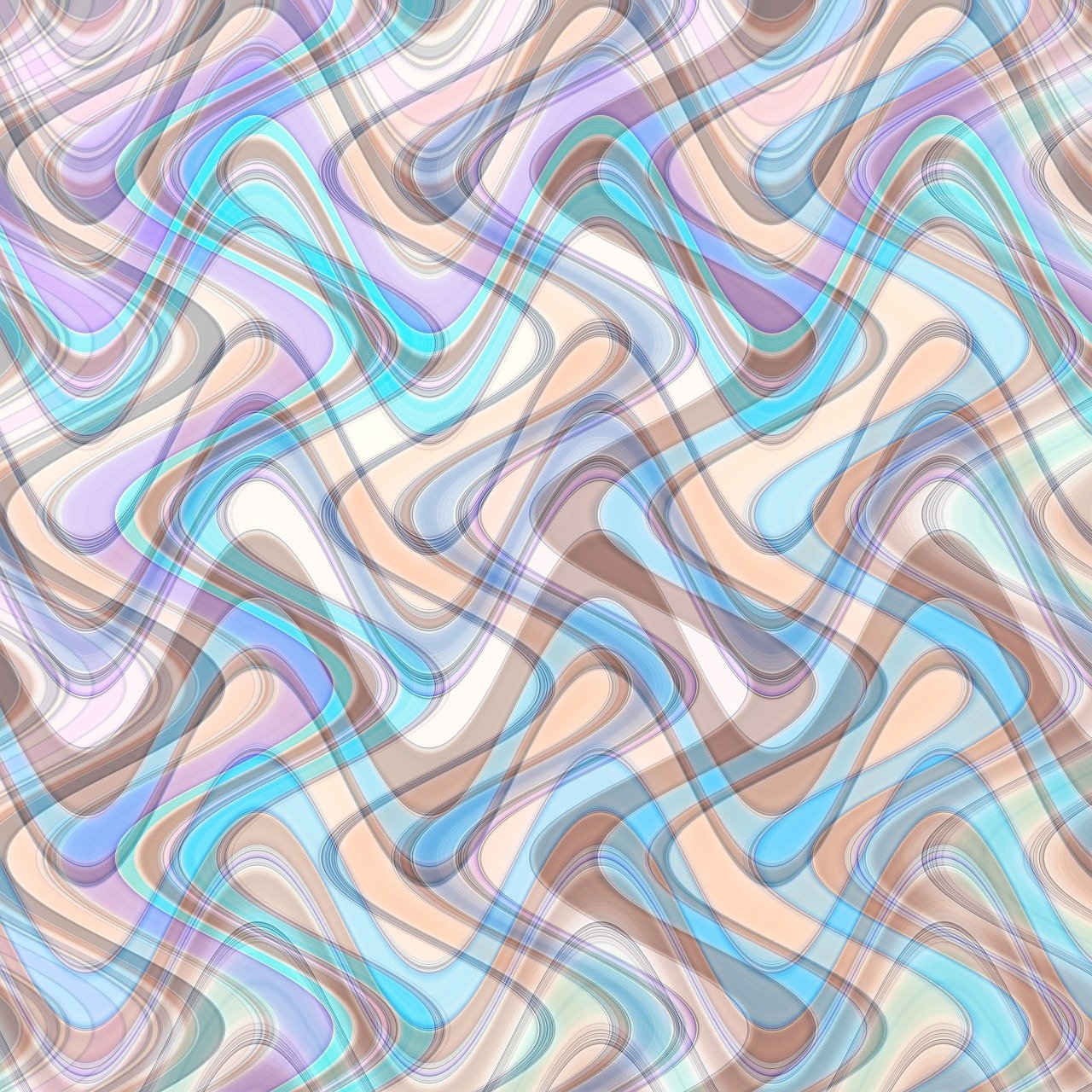
Understanding Quilting Patterns
Quilting patterns serve as the blueprints for creating beautiful quilts, guiding you through the entire process from start to finish. Just like an architect relies on a detailed plan to construct a building, quilters depend on patterns to achieve their desired results. These patterns can range from simple shapes to intricate designs, each offering its own unique charm and character. Understanding the basics of quilting patterns is essential for anyone looking to embark on this creative journey.
There are several types of quilting patterns, each catering to different styles and preferences. Some of the most common types include:
- Traditional Patterns: These patterns often feature classic designs such as the Log Cabin or the Flying Geese, which have been passed down through generations.
- Modern Patterns: Characterized by bold colors and geometric shapes, modern patterns often embrace minimalism and a contemporary aesthetic.
- Art Quilts: These patterns are more abstract and are often created for artistic expression rather than functional use.
The complexity of a quilting pattern can greatly influence your project. A simple pattern may be perfect for a beginner, while more complex designs can challenge even seasoned quilters. Understanding your own skill level is crucial when selecting a pattern. Remember, a pattern that is too difficult can lead to frustration, while one that is too easy might not provide the challenge you're looking for.
Additionally, quilting patterns can influence the overall aesthetic of your quilt. The choice of pattern not only determines the quilt's design but also its emotional resonance. For example, a pattern featuring soft, flowing lines may evoke feelings of calmness and serenity, while sharp, angular designs can create a sense of energy and movement. This emotional connection is one of the joys of quilting—each quilt tells a story, and the pattern is a significant part of that narrative.
In summary, understanding quilting patterns is a multi-faceted journey that involves recognizing the types of patterns available, assessing their complexity, and appreciating their emotional impact. As you gain experience, you will find yourself drawn to certain patterns that resonate with your personal style and quilting goals. So, take your time, explore the vast world of quilting patterns, and let your creativity flourish!
Q: What is the best quilting pattern for beginners?
A: For beginners, simple patterns like the Log Cabin or Patchwork Squares are ideal. They allow you to practice basic skills without overwhelming you.
Q: Can I modify a quilting pattern?
A: Absolutely! Many quilters like to put their own spin on existing patterns, whether by changing colors, altering sizes, or combining elements from different patterns.
Q: How do I choose the right fabric for my pattern?
A: Consider the color scheme, texture, and type of fabric that will complement your chosen pattern. It’s also helpful to create a swatch to visualize how the fabrics will look together.
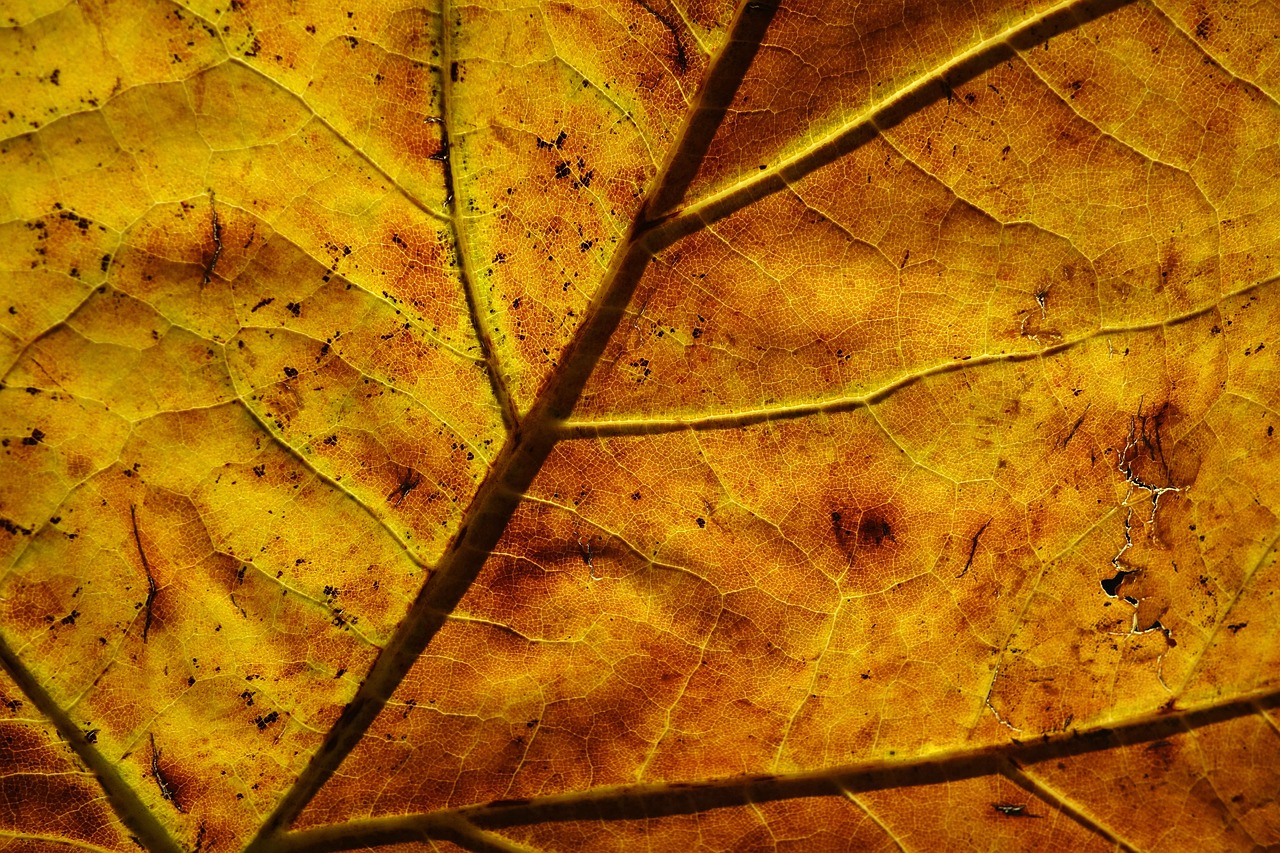
Choosing the Right Pattern for Your Skill Level
When it comes to quilting, selecting the right pattern is akin to picking the perfect recipe for a delightful dish. It can make or break your entire experience, especially if you're just starting out or looking to challenge yourself further. Understanding your skill level is essential because it sets the stage for how enjoyable and rewarding your quilting journey will be. So, whether you’re a novice, an intermediate, or an advanced quilter, there’s a pattern out there that’s just right for you!
For beginners, the key is to look for patterns that are straightforward and easy to follow. Think of these as your comfort food recipes—simple, satisfying, and effective for building confidence. Patterns like strip quilts or basic patchwork designs offer a gentle introduction to the world of quilting. They allow you to focus on mastering the fundamental skills without feeling overwhelmed. Imagine piecing together colorful strips of fabric; it’s like assembling a vibrant puzzle that comes to life with every stitch.
As you gain experience and become more comfortable with your sewing machine, you might want to explore intermediate patterns. These designs often incorporate more intricate techniques, such as foundation paper piecing or curved piecing. They can be thought of as the gourmet dishes that require a bit more skill and attention, but the results are absolutely worth it. You’ll find that these patterns challenge your abilities while also allowing for greater creativity. It’s like moving from a simple sandwich to a multi-layered cake; both are delicious, but one requires a bit more finesse!
For the advanced quilters, the world is your oyster! You can dive into complex designs that push the boundaries of your creativity and technical skills. Think of patterns that involve appliqué, 3D elements, or even quilting with specialty threads. These projects can be compared to crafting a masterpiece; they take time, patience, and a lot of passion, but the satisfaction of completing such a quilt is unparalleled. You’ll be amazed at how these advanced techniques can transform your quilting style and elevate your work to a whole new level.
To help you navigate through the maze of quilting patterns, here’s a simple table that categorizes various patterns based on skill levels:
| Skill Level | Recommended Patterns | Key Techniques |
|---|---|---|
| Beginner | Strip Quilting, Basic Patchwork | Straight Stitching, Simple Piecing |
| Intermediate | Foundation Paper Piecing, Curved Piecing | Precision Cutting, Complex Piecing |
| Advanced | Appliqué, 3D Quilts | Specialty Threads, Advanced Techniques |
In conclusion, choosing the right quilting pattern based on your skill level can significantly enhance your quilting experience. Remember, there’s no rush! Take your time to explore different patterns, and don’t hesitate to challenge yourself as you grow. Every quilt tells a story, and yours will reflect your journey as a quilter. So, embrace the process, enjoy the creativity, and most importantly, have fun!
Q1: What if I choose a pattern that is too advanced for my skill level?
A1: If you find yourself in over your head, don’t worry! You can always simplify the pattern or seek help from quilting communities online. Remember, every quilter has been there!
Q2: How can I improve my quilting skills?
A2: Practice is key! Start with simpler patterns, watch tutorial videos, and don’t hesitate to join quilting groups for support and tips.
Q3: Can I mix different patterns in one quilt?
A3: Absolutely! Mixing patterns can create a unique and personal touch. Just ensure that the colors and fabrics complement each other to maintain harmony in your quilt.

Beginner-Friendly Patterns
Starting your quilting journey can feel a bit overwhelming, but fear not! There are plenty of that can help you ease into this delightful craft. These patterns are designed with simplicity in mind, allowing you to focus on mastering the basics while creating something beautiful. Think of them as the gentle slopes of a mountain trail, guiding you toward the peaks of your quilting skills.
One of the best ways to dive into quilting is through strip quilting techniques. This method involves cutting fabric into long strips and sewing them together to create stunning designs. It’s like building a colorful Lego tower, where each strip adds a new layer of excitement. Not only is this technique straightforward, but it also allows for a lot of creativity. You can mix and match colors and patterns to reflect your personal style, making each quilt uniquely yours.
Another fantastic option for beginners is patchwork basics. This technique involves piecing together small squares or rectangles of fabric to form a larger design. It’s an excellent way to practice your sewing skills and learn how to select fabrics that complement each other. When starting with patchwork, consider using a color palette that speaks to you—perhaps soft pastels for a calming effect or vibrant colors for a lively quilt. The key is to enjoy the process, and remember that every stitch brings you closer to your finished masterpiece.
As you begin your quilting adventure, you might find it helpful to explore a few specific patterns that are particularly well-suited for beginners. Here are some ideas to get you started:
- Rail Fence Quilt: This pattern consists of simple diagonal lines that create a beautiful zigzag effect. It's a great way to play with color and fabric choices.
- Nine-Patch Quilt: A classic design that uses nine squares to create a larger block. This pattern is perfect for honing your piecing skills.
- Log Cabin Quilt: This pattern involves sewing strips of fabric around a central square, creating a cozy, cabin-like look. It's both simple and visually striking.
Remember, the most important aspect of choosing a beginner-friendly pattern is to find something that excites you. Whether it's the vibrant colors of a strip quilt or the classic charm of a patchwork design, your enthusiasm will shine through in your work. So grab your fabric, thread your needle, and let your creativity flow!
Q: What tools do I need to start quilting?
A: For beginners, essential tools include a rotary cutter, cutting mat, quilting ruler, sewing machine, and basic sewing supplies like pins and thread.
Q: How long does it take to make a quilt?
A: The time it takes to make a quilt varies depending on the pattern and your skill level. A simple quilt can take anywhere from a few hours to a couple of days, while more complex designs may take several weeks.
Q: Can I use any fabric for quilting?
A: While you can technically use any fabric, it’s best to choose cotton or cotton blends specifically designed for quilting, as they provide durability and ease of handling.

Strip Quilting Techniques
Strip quilting is a fantastic technique that opens up a world of creativity for both novice and seasoned quilters alike. Imagine taking long strips of fabric, each one a vibrant hue or a unique pattern, and weaving them together to create a stunning quilt. This method is not only straightforward but also allows you to experiment with color and design without feeling overwhelmed. Whether you're looking to make a cozy throw or a decorative wall hanging, strip quilting can be your go-to technique.
One of the best things about strip quilting is that it can be as simple or as intricate as you want it to be. For beginners, starting with strips that are the same width—let's say, 2.5 inches—can help you focus on getting the sewing technique down without worrying too much about complicated cutting. As you grow more comfortable, you can start to play with varying widths and lengths, which can add a dynamic flair to your quilts.
To get started with strip quilting, you'll need to gather some essential materials:
- Fabrics: Choose a variety of fabrics that complement each other. You might opt for a color palette that reflects the seasons or one that resonates with your personal style.
- Rotary Cutter and Mat: These tools will help you cut your strips accurately and efficiently.
- Quilting Ruler: A clear quilting ruler will assist you in measuring and cutting your fabric strips precisely.
- Thread: Make sure to pick a thread that matches your fabric choices to ensure a polished finish.
Once you have your materials ready, the next step is to cut your fabric into strips. You can choose to make your strips uniform or vary their widths for a more eclectic look. The key here is to ensure that your strips are straight and even, as this will make the sewing process much smoother. After cutting, arrange your strips in a way that pleases your eye. This is where the fun begins—playing with patterns and colors can be incredibly satisfying!
Now comes the sewing part. Start by placing two strips right sides together and sew along one edge using a quarter-inch seam allowance. Once you've sewn them together, press the seam open or to one side, depending on your preference. Continue this process, adding more strips to create a larger piece. Don't worry if the edges don't line up perfectly; the beauty of quilting often lies in its imperfections!
After you've sewn your strips together, you can cut your quilt top into various shapes or leave it as is. Some quilters choose to add borders or sashing between their strips for added dimension. This is where you can let your creativity shine! You might even consider incorporating other quilting techniques, such as appliqué or embroidery, to enhance your strip quilt further.
In summary, strip quilting is a versatile and enjoyable technique that can yield beautiful results. Whether you're making a quilt for yourself or as a gift, the process of selecting fabrics, cutting, and sewing strips together can be incredibly fulfilling. So grab your fabric stash, and let your imagination run wild—your next quilting masterpiece is just a few strips away!
1. What is the best fabric to use for strip quilting?
For strip quilting, cotton fabric is highly recommended due to its durability and ease of handling. However, you can also experiment with other fabric types like flannel or even blends, depending on the texture and look you want.
2. How wide should my strips be?
Typically, strips are cut at 2.5 inches wide, but you can adjust this based on your design preferences. Wider strips can create a bolder look, while narrower strips can offer more intricate patterns.
3. Can I use scraps for strip quilting?
Absolutely! Strip quilting is a fantastic way to use up fabric scraps. Mixing and matching different fabrics can lead to unique and colorful quilts.
4. Do I need a special sewing machine for strip quilting?
No special machine is required! A standard sewing machine with a straight stitch will work perfectly for strip quilting.

Patchwork Basics
Welcome to the wonderful world of patchwork quilting, where creativity meets craftsmanship! If you’re new to quilting, patchwork is one of the most accessible and rewarding techniques you can start with. It involves sewing together pieces of fabric to create a larger design, and the best part? You can use any fabric scraps you have lying around! Think of it as a puzzle where each piece contributes to a beautiful picture.
Before diving into your first patchwork project, it’s essential to understand some basic techniques and tips that will make your quilting journey smoother. First off, fabric selection is crucial. You want to choose fabrics that not only go well together in terms of color and pattern but also have similar weights. This ensures that your quilt layers will behave uniformly when sewn together. Here’s a quick table to guide you through some common fabric types used in patchwork:
| Fabric Type | Characteristics | Best For |
|---|---|---|
| Cotton | Soft, durable, and easy to work with | General patchwork |
| Flannel | Warm and cozy, slightly heavier | Warm quilts and blankets |
| Batiks | Vibrant colors and unique patterns | Decorative quilts |
| Denim | Sturdy and durable | Rustic or upcycled quilts |
Once you’ve selected your fabrics, the next step is piecing them together. This involves cutting your fabric into smaller shapes, typically squares or triangles, and sewing them into larger blocks. A good rule of thumb is to keep your cuts consistent; if you’re using 5-inch squares, make sure all your pieces are the same size. This will help maintain alignment and make your quilt look professional.
Now, let’s talk about some basic techniques that will enhance your patchwork skills:
- Pressing Seams: Always press your seams flat after sewing. This helps to eliminate bulk and ensures that your quilt lays flat.
- Matching Points: When sewing blocks together, take your time to align the seams perfectly. This attention to detail will pay off in the final product.
- Using a Rotary Cutter: A rotary cutter, mat, and ruler can make cutting fabric much easier and more accurate than using scissors.
As you gain confidence in your patchwork skills, don’t hesitate to experiment with different patterns and designs. The beauty of patchwork is that there are no strict rules—it's all about expressing your personal style. You can mix and match fabrics, try out different shapes, and even incorporate other quilting techniques as you become more comfortable.
In summary, patchwork quilting is a fantastic way to start your quilting journey. With a little practice and some creativity, you’ll be able to create stunning quilts that you can cherish for years to come. So gather your fabrics, grab your sewing machine, and let your imagination run wild!

Intermediate and Advanced Patterns
As you progress in your quilting journey, you may find yourself yearning for patterns that challenge your skills and ignite your creativity. Intermediate and advanced quilting patterns offer a delightful mix of complexity and artistry, allowing you to explore new techniques while expressing your personal style. These patterns often incorporate intricate piecing, advanced appliqué, and unique color combinations that can transform a simple quilt into a stunning masterpiece.
When diving into this realm, it's essential to select patterns that not only challenge you but also inspire you. For instance, consider patterns that utilize foundation paper piecing, which allows for precise shapes and angles that are often difficult to achieve with traditional piecing methods. This technique can open up a world of possibilities, enabling you to create intricate designs that wow your friends and family.
Another popular choice among seasoned quilters is the hexagon pattern. This design can be both simple and complex, depending on how you choose to piece it together. You might start with basic hexagons and gradually incorporate more elaborate designs, such as English paper piecing, which adds texture and depth to your quilts. The beauty of hexagons is that they can be arranged in countless ways, allowing you to play with color and shape while developing your skills.
For those looking to take their quilting to the next level, consider exploring medallion quilts. These quilts start with a central motif and build outward with various borders and designs. This approach not only enhances your piecing skills but also encourages you to experiment with different fabrics and colors. The final result is a stunning quilt that tells a story through its layers, making it a cherished piece for years to come.
To help you navigate the world of intermediate and advanced patterns, here are some key elements to consider:
- Complexity: Choose patterns that challenge you but are still achievable with your current skill set.
- Technique: Explore various quilting techniques such as curves, appliqué, and paper piecing to expand your repertoire.
- Design: Look for patterns that inspire you aesthetically, whether through color, shape, or theme.
As you experiment with these more intricate patterns, remember that the journey is just as important as the destination. Each quilt you create is a reflection of your growth as a quilter. Don't shy away from mistakes; instead, embrace them as valuable learning experiences. After all, every great quilter has a stash of unfinished or imperfect projects that taught them something new.
In conclusion, intermediate and advanced quilting patterns provide an exciting opportunity to enhance your skills and unleash your creativity. Whether you choose to tackle foundation paper piecing, hexagons, or medallion quilts, the key is to enjoy the process and let your imagination guide you. So, gather your fabrics, sharpen those rotary cutters, and dive into the world of intricate quilting patterns!
Q: What is the best way to learn new quilting techniques?
A: The best way to learn is through practice and exploration. Consider taking classes, watching online tutorials, or joining quilting groups to gain insights and tips from experienced quilters.
Q: How can I choose the right fabric for complex patterns?
A: For complex patterns, select fabrics with a good contrast in color and texture. This will help the design stand out and make piecing easier. Always test fabric combinations before committing to a large project.
Q: Can I modify a pattern to make it my own?
A: Absolutely! Modifying patterns is a great way to personalize your quilts. Feel free to change colors, sizes, or even combine elements from different patterns to create something unique.
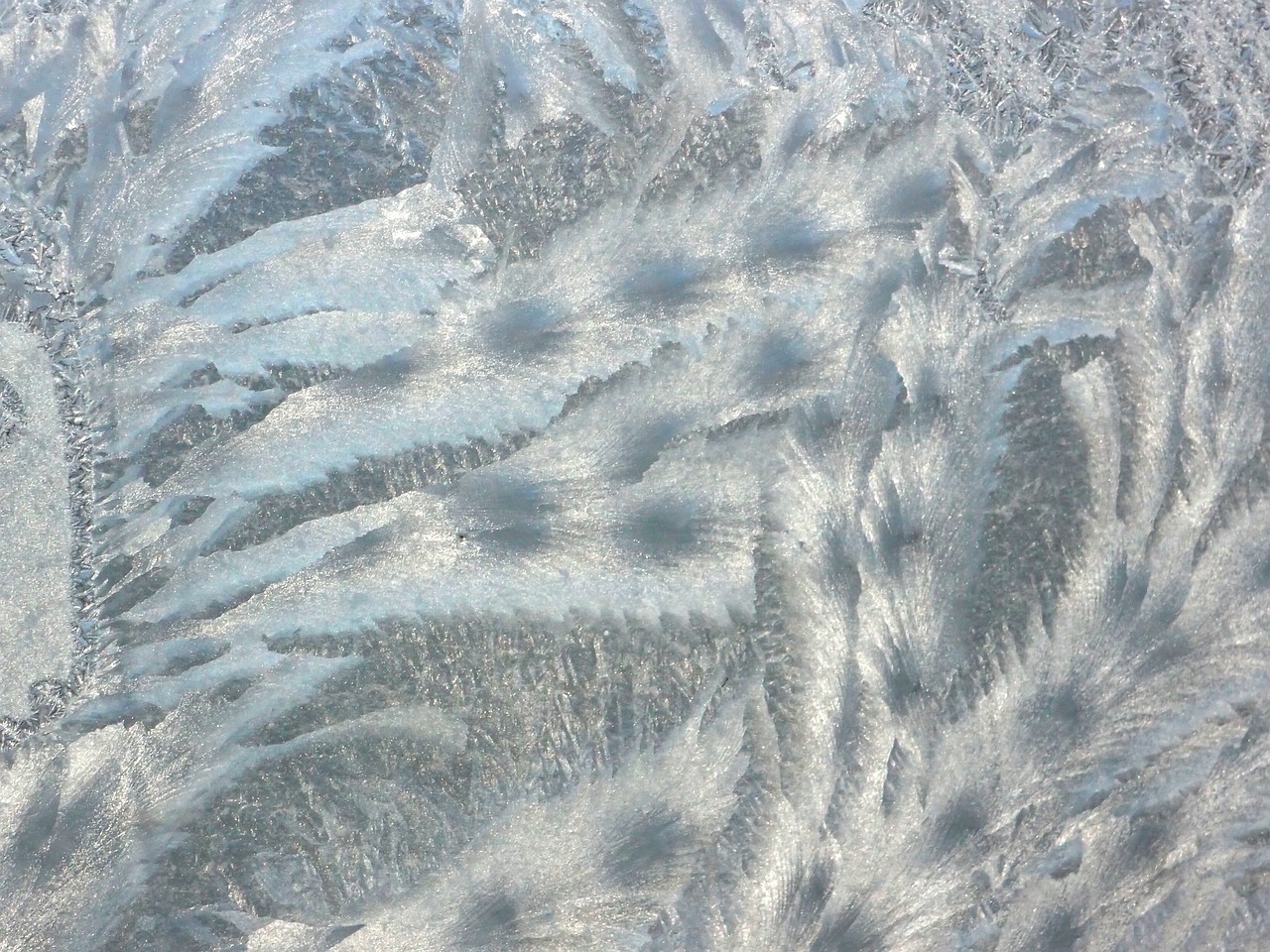
Seasonal and Thematic Patterns
When it comes to quilting, are a fantastic way to express creativity and bring a touch of personality to your projects. These patterns not only celebrate the beauty of different seasons but also allow you to showcase your interests and passions through fabric. Imagine snuggling under a quilt that reflects the vibrant colors of autumn leaves or the playful motifs of a summer garden. Seasonal and thematic quilting can transform your home and make your quilting journey even more enjoyable.
One of the most exciting aspects of seasonal patterns is their ability to evoke feelings and memories. For instance, a quilt adorned with holiday-themed designs can instantly make your space feel festive and warm. Patterns featuring snowflakes, Christmas trees, or Easter eggs can serve as stunning decorations or thoughtful gifts for loved ones. These quilts not only keep you cozy but also bring joy and cheer to your celebrations.
Additionally, nature-inspired quilts can be a beautiful way to connect with the great outdoors. Whether you’re a fan of serene landscapes, colorful floral patterns, or whimsical animal designs, there’s a quilt pattern that can capture the essence of nature. Imagine a quilt that showcases a breathtaking mountain range or a field of blooming wildflowers; it can serve as a daily reminder of the beauty that surrounds us. Nature-themed quilts are perfect for those who wish to bring the tranquility of the outdoors into their homes.
To help you navigate the world of seasonal and thematic patterns, here are a few popular motifs you might consider:
- Winter Patterns: Snowflakes, snowmen, and cozy cabins.
- Spring Patterns: Blossoming flowers, butterflies, and pastel colors.
- Summer Patterns: Beach scenes, tropical prints, and bright, sunny colors.
- Autumn Patterns: Leaves, pumpkins, and harvest themes.
- Holiday Patterns: Christmas, Halloween, Thanksgiving, and other festive designs.
Each of these patterns can be tailored to fit your personal style and the message you want to convey through your quilting. Whether you choose to make a quilt that celebrates the changing seasons or one that reflects your favorite hobbies, the possibilities are endless. So, grab your fabric stash and let your imagination run wild!
As you explore seasonal and thematic quilting, remember that the most important aspect is to enjoy the process. Quilting is not just about the final product; it's also about the journey of creating something unique and meaningful. So, take your time, experiment with different designs, and most importantly, have fun!
Q: What are some easy seasonal patterns for beginners?
A: Beginners can start with simple patterns like basic patchwork designs featuring seasonal colors or motifs. For example, a straightforward quilt with alternating squares of autumn leaves or snowflakes can be both beautiful and manageable.
Q: How can I incorporate my personal theme into a quilt?
A: Think about your interests and hobbies. If you love gardening, consider using floral fabrics or patterns that depict gardening tools. Personalizing your quilt with themes that resonate with you will make it even more special.
Q: Where can I find inspiration for seasonal quilting patterns?
A: Inspiration can be found in quilting magazines, online platforms like Pinterest, or local quilting groups. Attending quilting shows or fairs can also spark ideas and help you discover new patterns.

Holiday-Inspired Quilts
Creating quilts that celebrate the spirit of the holidays is not just a fun activity; it’s a way to infuse your home with warmth and joy. Imagine snuggling under a quilt that showcases your favorite holiday motifs—whether it’s pumpkins for Halloween, snowflakes for Christmas, or hearts for Valentine’s Day. These quilts can serve as stunning decorations or heartfelt gifts that carry sentimental value. So, how do you go about designing a holiday-themed quilt that truly captures the essence of the season?
First, consider the motifs you want to include. Seasonal patterns often draw inspiration from nature, festivities, and cultural symbols. For instance, a Christmas quilt might feature stars, trees, and ornaments, while a Thanksgiving quilt could display pumpkins and autumn leaves. The beauty of holiday-inspired quilts lies in their versatility; you can mix and match different patterns to create a unique piece that reflects your personal style.
Next, think about the color palette. Each holiday has its traditional colors that evoke certain feelings. For example, red and green are synonymous with Christmas, while pastels might be more fitting for Easter. You can create a cohesive look by selecting fabrics that complement each other. Consider using a
| Holiday | Traditional Colors | Suggested Fabrics |
|---|---|---|
| Christmas | Red, Green, Gold | Flannel, Cotton, Velvet |
| Halloween | Orange, Black, Purple | Cotton, Batik, Fleece |
| Thanksgiving | Brown, Yellow, Orange | Muslin, Cotton, Linen |
| Easter | Pastels (Pink, Blue, Yellow) | Cotton, Jersey, Silk |
Once you have your motifs and colors sorted, it’s time to choose a pattern. There are countless designs available, from simple patchwork to intricate appliqué. If you’re new to quilting, you might want to start with a straightforward pattern that allows you to focus on fabric selection and stitching techniques. As you gain confidence, you can venture into more complex designs that challenge your skills and creativity.
Holiday quilts can also be a wonderful opportunity to involve family and friends. Why not host a quilting party where everyone contributes a square? This collaborative effort can turn into a cherished memory, and the finished quilt will carry the stories and laughter shared during its creation. Plus, it’s a fantastic way to spread the joy of quilting to others!
Finally, don’t forget about the finishing touches. Adding embellishments like buttons, embroidery, or quilting patterns can elevate your quilt from beautiful to stunning. These details can enhance the holiday theme and make your quilt a true work of art. Just remember, the most important aspect of creating holiday-inspired quilts is to enjoy the process and let your creativity shine!
- What fabrics are best for holiday quilts? Cotton is a popular choice due to its versatility and ease of use, but consider flannel for a cozy feel or batik for vibrant colors.
- How can I incorporate family traditions into my holiday quilt? You can use family colors, favorite symbols, or even fabric scraps from past celebrations to create a quilt that tells your family’s story.
- Are there specific techniques I should use for holiday quilts? Techniques like appliqué and embroidery can add a festive touch, while piecing and quilting can provide the structure you need.

Nature and Landscape Patterns
Nature and landscape patterns are a delightful way to bring the beauty of the outdoors into your quilting projects. Imagine wrapping yourself in a quilt that showcases the vibrant colors of a sunset or the serene greens of a forest. These patterns not only celebrate the natural world but also allow quilters to express their love for nature through their craft. Whether you're a seasoned quilter or just starting out, incorporating these themes can add a unique touch to your creations.
One of the most appealing aspects of nature-inspired quilting is the variety of designs available. From intricate floral motifs to expansive landscapes, the options are endless. For instance, you might choose a pattern that features a tranquil mountain scene, complete with rolling hills and a clear blue sky. Alternatively, you could opt for a design that highlights the delicate beauty of wildflowers swaying in the breeze. Each pattern tells a story and invokes a feeling, making your quilt not just a functional item, but a piece of art.
When selecting a nature or landscape pattern, consider the following elements:
- Color Palette: Choose colors that resonate with the theme you wish to convey. Earthy tones can evoke a sense of calm, while bright, vibrant colors can bring energy and excitement.
- Complexity: Depending on your skill level, you may want to start with simpler patterns that still capture the essence of nature. As you gain confidence, you can tackle more complex designs.
- Fabric Selection: The type of fabric you choose can greatly influence the final look of your quilt. Consider using batiks for a watercolor effect or cotton prints for a more traditional appearance.
Additionally, many quilters find inspiration in their surroundings. Taking a walk in a local park or a hike through the woods can spark ideas for your next quilting project. You might notice the way light filters through the trees or how the colors change with the seasons, and these observations can translate beautifully into your fabric choices and patterns.
As you embark on your journey with nature and landscape patterns, remember that the process should be enjoyable. Don’t hesitate to experiment with different techniques and styles. Whether you choose to create a quilt that reflects a specific season, like a winter wonderland, or a more abstract representation of nature, the most important thing is to let your creativity flow. Each quilt you make is a reflection of your personal experiences and emotions, making it all the more special.
Q: What are the best fabrics for nature-themed quilts?
A: Cotton fabrics are a popular choice due to their versatility and ease of use. Batiks can also add a unique texture and depth to your nature-inspired designs.
Q: How can I incorporate my personal style into nature patterns?
A: Consider using your favorite colors and fabrics that resonate with you. You can also mix different patterns to create a unique look that reflects your personality.
Q: Are there any specific techniques for creating landscape quilts?
A: Techniques such as raw edge appliqué and foundation piecing can be effective for creating detailed landscape quilts. These methods allow for greater precision and creativity.
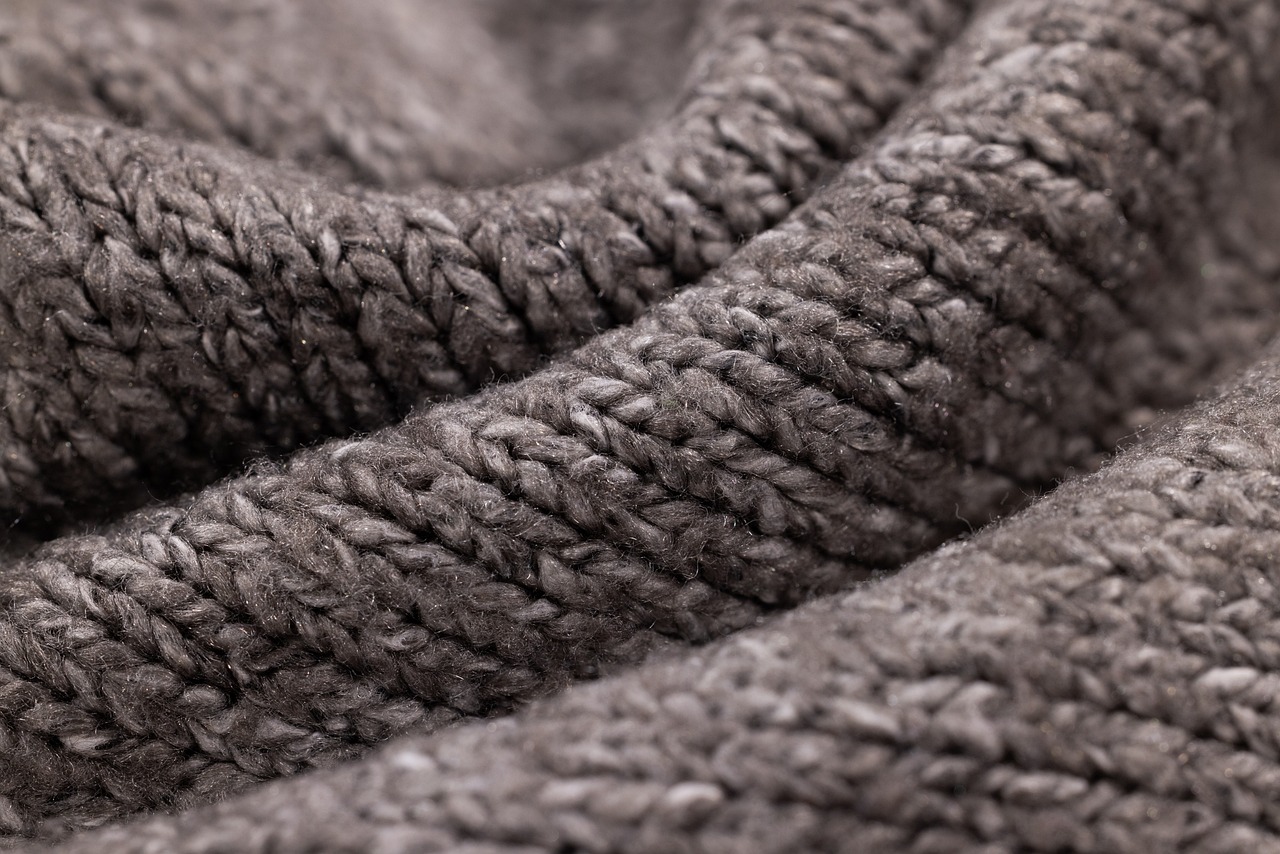
Tips for Selecting Fabrics for Your Pattern
Choosing the right fabrics is crucial for bringing your quilting pattern to life. The fabric selection process can feel overwhelming, especially with the myriad of options available. However, understanding a few key principles can make this task not only manageable but also enjoyable. Think of fabric selection as the seasoning in your favorite dish; the right blend can elevate your quilt from ordinary to extraordinary!
First and foremost, consider the type of fabric you're working with. Different fabrics have unique properties that can influence the overall look and feel of your quilt. For instance, cotton is the most popular choice among quilters due to its durability, ease of sewing, and vast selection of prints and colors. However, don’t overlook other options like flannel for cozy quilts, or even silk for a luxurious finish. Each fabric type can evoke different emotions and aesthetics, so choose wisely!
Next, let’s dive into color theory, which is essential for creating visually appealing quilts. Understanding how colors interact can help you create a harmonious look. Here are a few color combinations to consider:
- Monochromatic: Using different shades of the same color creates a soothing effect.
- Analogous: Combining colors that are next to each other on the color wheel can produce a serene palette.
- Complementary: Opposite colors on the color wheel can create striking contrasts and vibrant designs.
When selecting colors, it’s also important to consider the theme of your quilt. Are you going for a seasonal look, or perhaps something that reflects a personal story? This can guide your fabric choices. For example, if you’re making a quilt for winter, cool colors like blues and whites can evoke the chill of the season, while warm tones like reds and greens can bring a festive feel for the holidays.
Texture is another critical aspect of fabric selection. Different textures can add depth and interest to your quilt. Consider mixing smooth cotton with textured fabrics like linen or even fleece to create a unique tactile experience. Just like in cooking, where texture can make or break a dish, in quilting, the right fabric textures can bring your design to life!
Lastly, don’t forget about the scale of your prints. Large prints can dominate a quilt and may not work well in smaller projects, while tiny prints can get lost in larger designs. A good rule of thumb is to mix different scales to create visual interest. For instance, pair a large floral print with smaller geometric patterns to strike a balance that keeps the eye engaged. It’s like creating a balanced meal; you want a little bit of everything to make it satisfying!
In summary, selecting fabrics for your quilting pattern is about finding the right combination of type, color, texture, and scale. Take your time, experiment, and most importantly, have fun with the process. After all, quilting is not just about the end product; it’s about enjoying the journey of creation!
Q: What is the best fabric for beginners?
A: Cotton is the best choice for beginners due to its ease of handling and wide availability. It’s forgiving and comes in various prints and colors, making it perfect for learning.
Q: How do I choose colors for my quilt?
A: Start by selecting a color palette that resonates with you. Consider using a color wheel to find complementary or analogous colors that work well together.
Q: Can I mix different fabric types in one quilt?
A: Absolutely! Mixing fabrics can add texture and interest to your quilt. Just ensure that the fabrics you choose work well together in terms of weight and drape.
Q: What should I consider when buying fabric online?
A: Pay attention to the fabric content, weight, and reviews on the site. It's also helpful to order swatches if available to see the colors and textures in person.
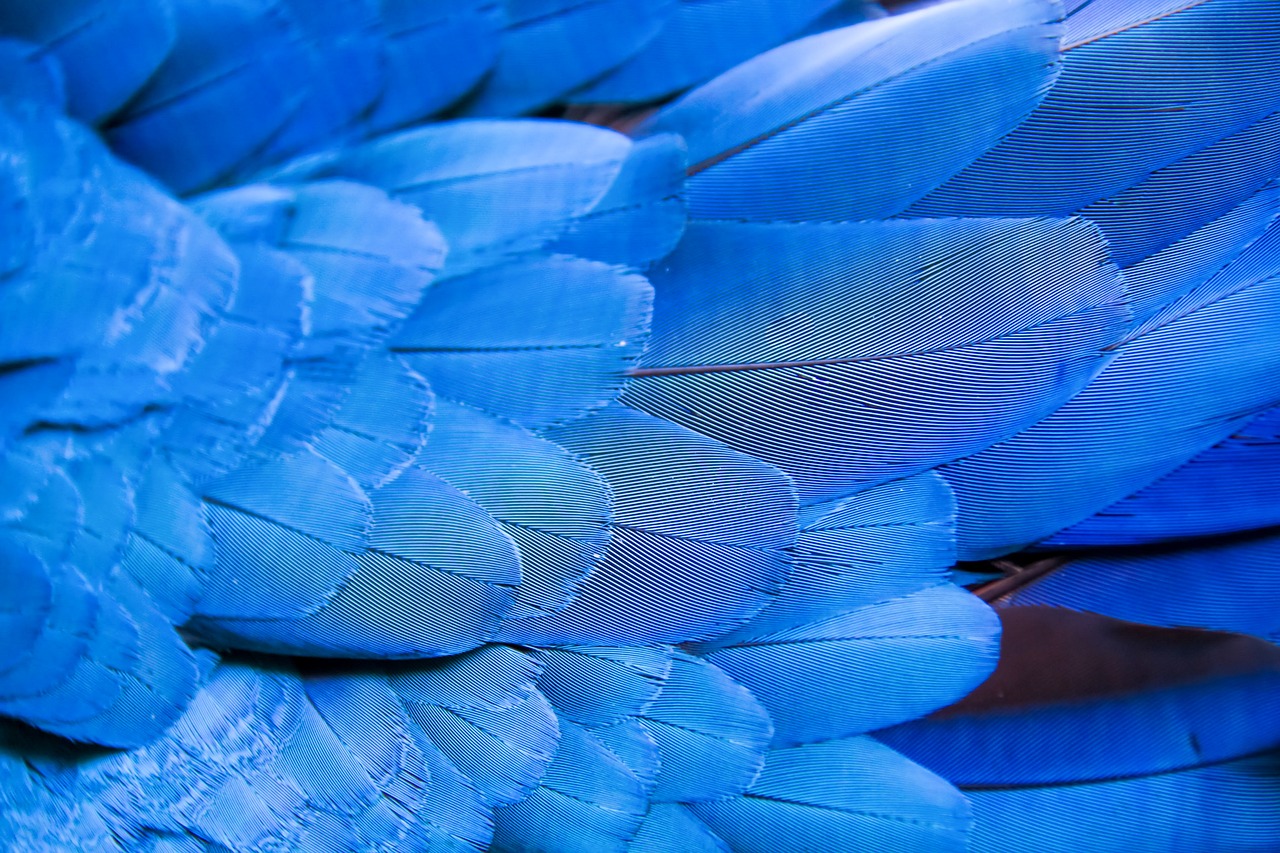
Understanding Fabric Types
When diving into the world of quilting, one of the most exciting yet challenging aspects is understanding the different fabric types available. Each fabric type brings its own unique characteristics to your quilting projects, influencing everything from the quilt's texture to its durability. Let's explore the most common fabric types used in quilting, so you can make informed choices that will elevate your creations.
Cotton is the most popular fabric choice among quilters, and for good reason. It’s breathable, easy to work with, and comes in a vast array of colors and patterns. Cotton fabrics are generally durable, making them perfect for both quilt tops and backing. When selecting cotton, consider the thread count; higher thread counts typically result in smoother, more luxurious fabrics.
Another fabric to consider is flannel. Known for its warmth and softness, flannel is an excellent choice for cozy quilts, especially in the colder months. However, it can be a bit stretchy, so it’s essential to handle it with care during the sewing process. Flannel quilts are perfect for snuggling up on chilly nights, adding a touch of comfort to your home.
Batiks are another fascinating option. These fabrics are dyed using a wax-resist technique, resulting in vibrant colors and intricate patterns. Batiks often have a unique texture and are great for adding a touch of artistry to your quilts. They can be a bit more challenging to work with due to their tightly woven nature, but the stunning results are worth the effort.
For those looking to experiment, consider using silk or satin. These luxurious fabrics can create stunning quilts but require a higher level of skill to handle properly. Their delicate nature means they can fray easily, so it’s crucial to use a fine needle and take extra care when cutting and sewing. The shimmering finish of silk or satin can add a glamorous touch to any quilt, making it a great choice for special occasions.
Lastly, let’s not forget about blend fabrics. These fabrics combine cotton with synthetic fibers, resulting in materials that are often more durable and less prone to wrinkling. While they might not have the same breathability as pure cotton, they can be a practical choice for everyday quilts.
To summarize, here’s a quick overview of the fabric types discussed:
| Fabric Type | Characteristics | Best For |
|---|---|---|
| Cotton | Durable, breathable, wide variety | All types of quilts |
| Flannel | Soft, warm, stretchy | Cozy quilts for winter |
| Batiks | Vibrant colors, unique texture | Artistic quilts |
| Silk/Satin | Luxurious, delicate | Special occasion quilts |
| Blend Fabrics | Durable, less wrinkling | Everyday quilts |
Understanding these fabric types will not only enhance your quilting experience but also help you create quilts that are both beautiful and functional. So, the next time you're at the fabric store, take a moment to explore and feel the different fabrics. Your choice will make all the difference in your quilting journey!
- What is the best fabric for beginners? Cotton is ideal for beginners due to its ease of use and availability.
- Can I mix different fabric types in one quilt? Yes, mixing fabrics can add visual interest, but be mindful of their different properties.
- How do I care for my quilts? Most quilts can be machine washed on a gentle cycle, but always check the care instructions for specific fabrics.
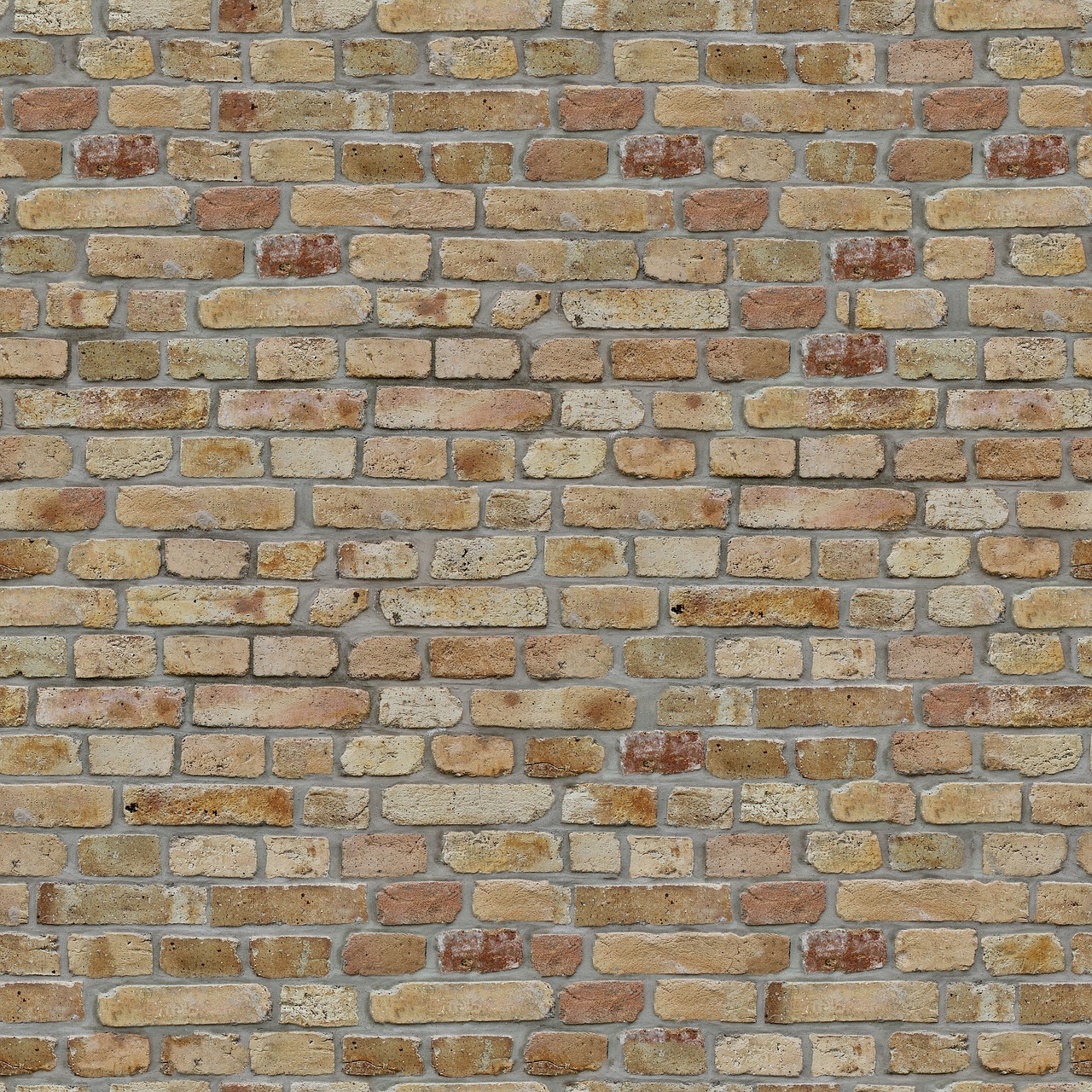
Color Theory in Quilting
When it comes to quilting, color is not just a visual delight; it’s the heartbeat of your quilt! Understanding color theory can elevate your quilting projects from ordinary to extraordinary. Just like a painter chooses colors to evoke emotions, you too can use color to tell a story through your quilts. So, how do you get started? Let's dive into some fundamental concepts that will help you select the perfect hues for your next masterpiece.
First off, it's essential to grasp the color wheel. This tool is your best friend when it comes to understanding how colors interact with one another. The wheel is divided into primary, secondary, and tertiary colors:
| Type | Colors |
|---|---|
| Primary | Red, Blue, Yellow |
| Secondary | Green, Orange, Purple |
| Tertiary | Red-Orange, Yellow-Orange, Yellow-Green, Blue-Green, Blue-Purple, Red-Purple |
By understanding these categories, you can start to experiment with color combinations that resonate with your style. For instance, complementary colors—those that are opposite each other on the color wheel—create a vibrant look when paired together. Imagine a quilt with rich purple and bright yellow fabrics; the contrast can be striking! On the other hand, analogous colors, which sit next to each other on the wheel, offer a more harmonious and soothing effect. Think of a quilt that blends blue, blue-green, and green for a calming oceanic vibe.
Another critical aspect of color theory is understanding warm and cool colors. Warm colors, like reds and oranges, tend to evoke feelings of warmth and energy, while cool colors, such as blues and greens, bring a sense of calm and tranquility. When planning your quilt, consider the mood you want to create. Do you want it to feel cozy and inviting, or fresh and airy? This decision can significantly influence your fabric choices.
Moreover, don’t underestimate the power of patterns and textures. A solid color can serve as a beautiful backdrop for a busy patterned fabric, allowing the colors to pop without overwhelming the viewer. Mixing different textures can also add depth to your quilt, making it visually captivating. For example, combining a soft flannel with a crisp cotton can create a stunning contrast that invites touch.
Finally, always keep in mind the scale of your prints. Large prints can dominate a quilt, while small prints can get lost in the mix. A good rule of thumb is to balance your fabric choices by mixing different scales. For instance, pairing a large floral print with a small polka dot can create a dynamic and visually interesting composition.
In summary, color theory in quilting is all about creating a visual narrative. By understanding the color wheel, the effects of warm and cool colors, and how to mix patterns and textures, you can take your quilting projects to new heights. So grab your fabric, let your creativity flow, and watch as your quilt transforms into a stunning work of art!
- What is the best way to choose colors for my quilt? Start by considering the mood you want to create, then use the color wheel to select complementary or analogous colors.
- Can I mix different fabric types in my quilt? Absolutely! Mixing fabric types can add texture and depth to your quilt, making it more interesting.
- How do I know if my color choices will work well together? Create a small swatch or sample piece with your chosen fabrics to see how they look together before committing to your quilt.
Frequently Asked Questions
- What are the different types of quilting patterns?
Quilting patterns come in various types, including patchwork, applique, and whole cloth, each offering unique designs and techniques. Patchwork patterns involve sewing together different fabric pieces, while applique patterns incorporate fabric shapes sewn onto a base fabric. Whole cloth quilts are made from a single piece of fabric, often featuring intricate quilting designs.
- How do I choose the right quilting pattern for my skill level?
Choosing a quilting pattern that aligns with your skill level is essential. Beginners should look for simple designs like strip quilting or basic patchwork, which help build confidence. Intermediate quilters can tackle patterns with more complex shapes and techniques, while advanced quilters might enjoy intricate designs that allow for creative expression.
- What are some beginner-friendly quilting techniques?
For beginners, strip quilting is a fantastic technique that simplifies the process by using pre-cut fabric strips. Another great option is basic patchwork, which involves sewing together squares or triangles of fabric. Both techniques are straightforward and help novice quilters develop their skills while creating beautiful projects.
- How can I incorporate seasonal themes into my quilting?
Seasonal and thematic patterns can add a special touch to your quilts. For instance, holiday-inspired quilts can feature festive motifs like snowflakes or pumpkins, while nature patterns might depict flowers or landscapes. These designs not only celebrate the seasons but also allow for personal expression in your quilting projects.
- What should I consider when selecting fabrics for my quilt?
When selecting fabrics, consider the color scheme, texture, and type of fabric. It’s essential to choose fabrics that complement each other and fit the overall theme of your quilt. Additionally, understanding different fabric types, such as cotton, flannel, or batik, can help you achieve the desired look and feel for your project.
- How does color theory impact quilting?
Color theory plays a significant role in quilting aesthetics. By understanding concepts like complementary and analogous colors, you can create visually appealing quilts. For example, using colors that contrast can make a pattern pop, while harmonious colors can create a soothing effect. Experimenting with color combinations can lead to stunning results in your quilting.



















